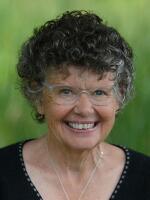It wasn’t until I became familiar with the work of the Dutch graphic artist M.C. Escher that I learned about tessellations. I wish I could share that he was inspired by nature, but apparently, he became fascinated by the tessellating patterns in the floor mosaics in the Alhambra, a fourteenth century Moorish castle in Spain. But he did incorporate nature into a great deal of his work.
Tessellations are patterns made up of geometric shapes which are repeated and joined together without any gaps or overlaps. Circles and pentagons cannot tessellate. Squares, rectangles and triangles can fit together without gaps or overlaps, but I became fascinated by tessellating hexagons.
And I started seeing them everywhere – honeycombs, turtle shells, insect eyes, basalt columns, Saturn’s north pole and here in Michigan, in Petoskey stones!
Of all the polygons, tessellating hexagons best fill an area with equal-sized units and no wasted space. And because of the 120-degree angles, a hexagon minimizes the perimeter of an area. So, for example, in a beehive, the six-sided walls of each cell require less wax than, say, a square or triangular cell would.
The same holds true for Michigan’s ancient marine corals. Alive millions of years ago when Michigan was under a warm, shallow salt-water sea, each of the soft-bodied coral polyps shared its six-sided calcium carbonate skeleton with its six nearest neighbors, and these colonies of conjoined exoskeletons formed massive reefs. We call fossils of these ancient corals “Petoskey stones,” but scientists use the genus name Hexagonaria.
We can learn from nature. NASA did. In designing the amazing James Webb telescope, instead of using circular mirrors, which would be desirable to focus light but could not fit together without having gaps, engineers realized they could gain more surface area by combining hexagon-shaped, gold-plated beryllium mirror segments. They’re almost circular and able to focus. And, these 18 golden hexagons tessellate.



